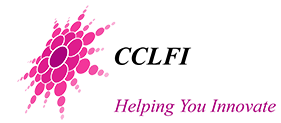These tables analyze the project's success using KPA tools. You can also view the executive summary of the project.
Capital/Assets and Vulnerabilities Before the Project
| ASSETS/CAPITAL | VULNERABILITIES |
| HUMAN CAPITAL | |
|
+ Desire to have their own permanent settlement; + Desire to send their children to school; + Some members, mostly women, have been trained on health and literacy. The training/classes were part of the ICHSP, an Aus-Aid funded project of DOH; + Indigenous knowledge on herbal remedies. The Mamanwa group in Brgy. Payapag has a mananambal(healer) who also serves as mananabang (one who learned to deliver babies through experience). |
- Prevalence of communicable diseases like filariasis, tuberculosis and leprosy. Children are highly susceptible to diarrhea; - Poor nutrition/malnutrition specially among children; - Low level of literacy among adults and teen-agers. |
| SOCIAL CAPITAL | |
|
+ Cohesiveness and loyalty to the group due to kinship. A Mamanwa band is practically an extended family. + Presence of a Mamanwa in LGU. One of the councilors of Brgy. Gacepan comes from the Mamanwa community. |
|
| STAKEHOLDER CAPITAL | |
|
+ Mandate of SUNGCOD to "help empower" the Mamanwa communities in the province; + Presence of NGO leaders and workers who are committed to work with the Mamanwa; + Trained community organizers. The two COs were trained on IP issues and were sent to the T'boli community to observe methods in conducting an adult literacy program. |
- Non-affirmative attitude of `lowlanders' toward the Mamanwa's norms, e.g., perception that they are 'dirty' and 'backward', hence, are treated as 'outsiders;' - Weaknesses in government's processes recognizing IP's ancestral rights. For instance, mining concessions are given priority in the two Surigao provinces, which are major sources of nickel. |
| CULTURAL CAPITAL | |
|
+ Presence of older generation who are still able to hand down the history and tradition of the Mamanwa tribe. |
- Diminishing interest of younger generation to learn indigenous practices. The educational system does not affirm the Mamanwa's cultural practices and history, hence most of those who have attended formal education are made to feel inferior; - Non-observance of tribal practices. Some traditions such as the kahimunan and the burial practice of leaving the land when a member dies, could no longer be observed because of frequent displacement. |
| LOCAL INFRASTRUCTURE/SERVICES AND ACCESS TO NATURAL RESOURCES FROM THE PUBLIC DOMAIN | |
|
+ Access to forest resources, e.g., materials like bamboo and coconut for housing and plants for food |
- Lack of access to permanent and decent shelter; - Lack of access to basic services: potable water supply, electricity, waste management, and health services |
| STRUCTURAL CAPITAL | |
|
+ Selection of a tribal leader is based on the group's unanimous acceptance, hence the leader is able to maintain cohesiveness. |
|
| FINANCIAL CAPITAL | |
|
|
- Income is derived mainly from working as farm laborers. Some earn as much as P120/wk. |
| NATURAL CAPITAL | |
|
|
- The province is prone to natural calamities such as typhoons, landslides and floods. |
Interplay of Capital During Project Implementation
| CAPITAL/ASSETS USED TO ACHIEVE OBJECTIVES | VULNERABILITIES ADDRESSED |
| HUMAN CAPITAL | |
|
|
| STAKEHOLDER CAPITAL | ACCESS TO LOCAL INFRASTRUCTURE/SERVICES |
|
|
| SOCIAL CAPITAL | STRUCTURAL CAPITAL |
|
|
| NATURAL CAPITAL | CULTURAL CAPITAL |
|
|
| INTERVENTIONS MADE TO USE ASSET/ADDRESS VULNERABILITIES | |
| STAKEHOLDER CAPITAL | |
|
|
| STRUCTURAL CAPITAL | |
|
|
| SOCIAL CAPITAL | |
|
|
| HUMAN CAPITAL | |
|
|
| CULTURAL CAPITAL | |
|
|
Changes in Assets/Capital After the Project
| ACCESS TO LOCAL INFRASTRUCTURE/SERVICES |
|
|
| STRUCTURAL CAPITAL |
|
|
| HUMAN CAPITAL |
|
|
| STAKEHOLDER CAPITAL |
|
|
| SOCIAL CAPITAL |
|
|
| PHYSICAL CAPITAL |
|
|
